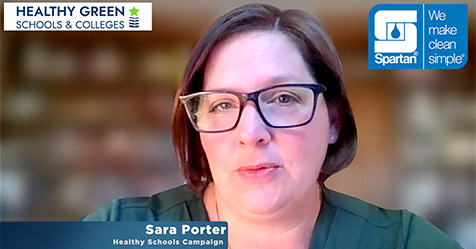Whenever I start working with a new client such as a university or large corporate facility, one of the first things I do is take a look inside the janitorial closet. Invariably, I find one or more pieces of cleaning equipment, often costly items, sitting in the back of the closet collecting dust.
Usually, there is nothing wrong with the machine. So why is it sitting in the closet collecting dust? What often happens is that a facility manager, owner, or supervisor of a large contract cleaning company purchases a machine after attending a trade show or visiting a distributor without consulting their staff.
It’s hard enough to ask cleaning professionals to make changes in their cleaning routines, procedures, and the products they use to perform their cleaning tasks, but when management purchases a piece of equipment (a cleaning solution or tool)without their advanced “buy-in,” you can expect additional resistance. With no involvement in formulating the decision, these key stakeholders may remain unpersuaded of the solution’s value.
Cleaning staff most likely will try the machine, but managers and contractors will typically soon discover that gaining acceptance for and use of the new tool may be difficult. . Consider the possible reasons why:
- Who’s going to be using the new product every day?
- Whose work (i.e., time and effort) will the new product impact?
- Who has to learn how to use the new tool?
Essentially, buy-in is a key part of effective leadership. A leader knows from the start how important staff buy-in is, and makes sure staff is involved before certain purchase decisions are made.
Some of the steps an effective leader can take to ensure not only staff buy-in of a new product or machine, but acceptance and even appreciation for the new item, include the following:
- If looking for new tools and equipment, make sure your staff understands your vision, or what you are trying to accomplish, and why new equipment (procedure or product) is necessary. Is it time to replace machines that are getting too old? Is there a push for enhanced worker productivity? Is worker safety a concern? Be transparent and make sure staff knows you want them to be included in this new direction.
- Discuss cleaning needs, concerns, and challenges with your staff. While you want the staff to share in your vision, you also want everyone to know you are empathetic to their concerns and are willing to work with them to find solutions.
- Invariably, some staffers will indicate their reluctance to accept your vision and the purchasing of new tools, equipment, or changes to their cleaning procedures or routine. You need to address this reluctance directly and work to overcome unwillingness early in the process. The problem is they can “poison the well,” so to speak, and spread their unwillingness to other staffers.
- If investigating new cleaning equipment at a trade show, such as the ISSA/INTERCLEAN® North America 2016 show coming up this fall in Chicago, IL, bring some or all of your staff to the show. Not only will they have a chance to test drive the equipment, they can learn quite a bit about it at the show. They will know what it can do, how it can help them, and even how to operate the machine.
Finally, if your vision continues to meet resistance, find out why. Usually this happens when you are not listening to your staff’s feedback. In this case, you must be prepared to adjust your vision. Sometimes this means making mid-course corrections, and it may even mean starting from scratch. But do not view this as defeat. Ultimately, it tells your workers how much you value their ideas and how much you want them to be on board when changes must be made. This is a sign of good leadership.



